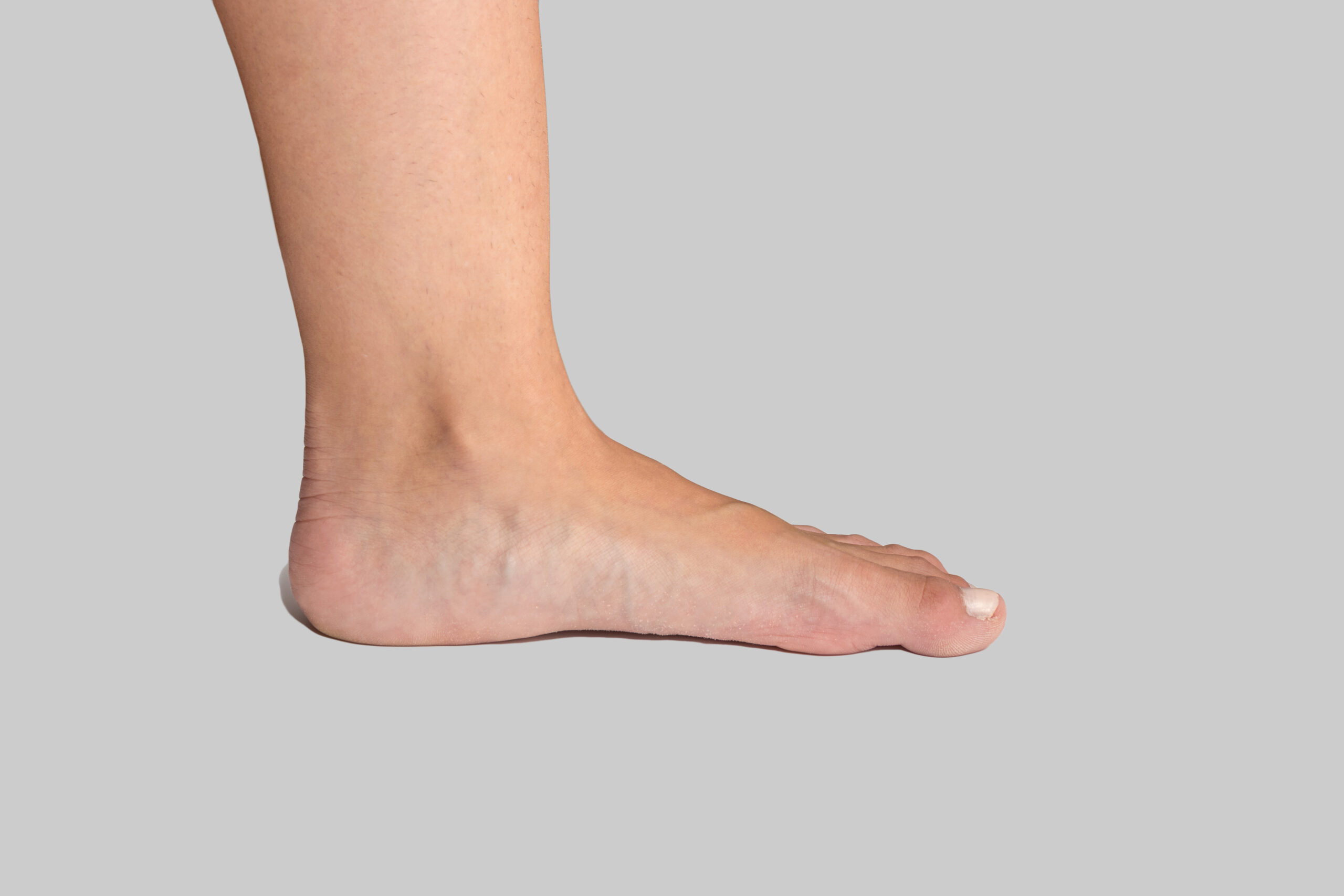Flat Feet
Applies to: Foot/Ankle

When a person stands barefooted, the instep is the inside part of the foot that forms a natural arch, while the rest remains flat on the floor. Although the height of a person’s instep will vary, most people have a noticeable space or arch. Many patients who suffer from flat feet (fallen arches) have almost no curvature, and the bottom of their feet tend to roll inward, leading to an uneven distribution of their body weight. This unnatural strain on the muscles, tendons, and ligaments can cause recurrent foot pain.
Adult flat feet that develop later in life can also result from various medical conditions, including the following.
- Foot joint injuries
- Osteoarthritis
- Ruptured tibial tendon
- Cerebral palsy
- Spina bifida
- Muscular dystrophy
- Obesity
- Shoes with poor support
Flat feet can also be caused by a congenital defect (tarsal coalition) where two or more bones are fused. This often leads to a severe lack of foot flexibility that may require surgical intervention.
Treatment options for flat feet will vary based on the severity and cause. Non-surgical approaches may include foot orthotics, supportive shoes, calf stretching exercises, or leg braces typically used to treat neurologic-related conditions.
Flat Feet In Children
In such cases, the child’s foot may have acceptable flexibility, allowing them to grow up with normal adult arches. Children with no symptoms and only a mild flatfoot deformity usually do not require any treatment.
Generally speaking, if a child still has a flatfoot deformity at age two or three, it is important to have a foot specialist (podiatrist) examine the biomechanics. In contrast, the foot is still mostly cartilage. If symptoms are moderate to severe, the podiatrist may recommend interventions, such as foot orthotics, supportive shoes, calf stretching exercises, leg braces, or corrective surgery.
Surgery For Adult & Pediatric Flat Feet
Unless the flatfoot deformity is severe or arthritis is suspect, non-surgical alternatives such as medications, supportive shoes, or orthotics are preferred.
When conditions cannot be controlled, flat foot surgery may be indicated to include:
- Posterior tibial tendon repair
- Tendon transfers
- Bone realignment (osteotomy)
- Bone fusion (arthrodesis)
Since infants have chubby feet with less-defined bony structures, it can be difficult to evaluate whether they are at risk for foot problems.
